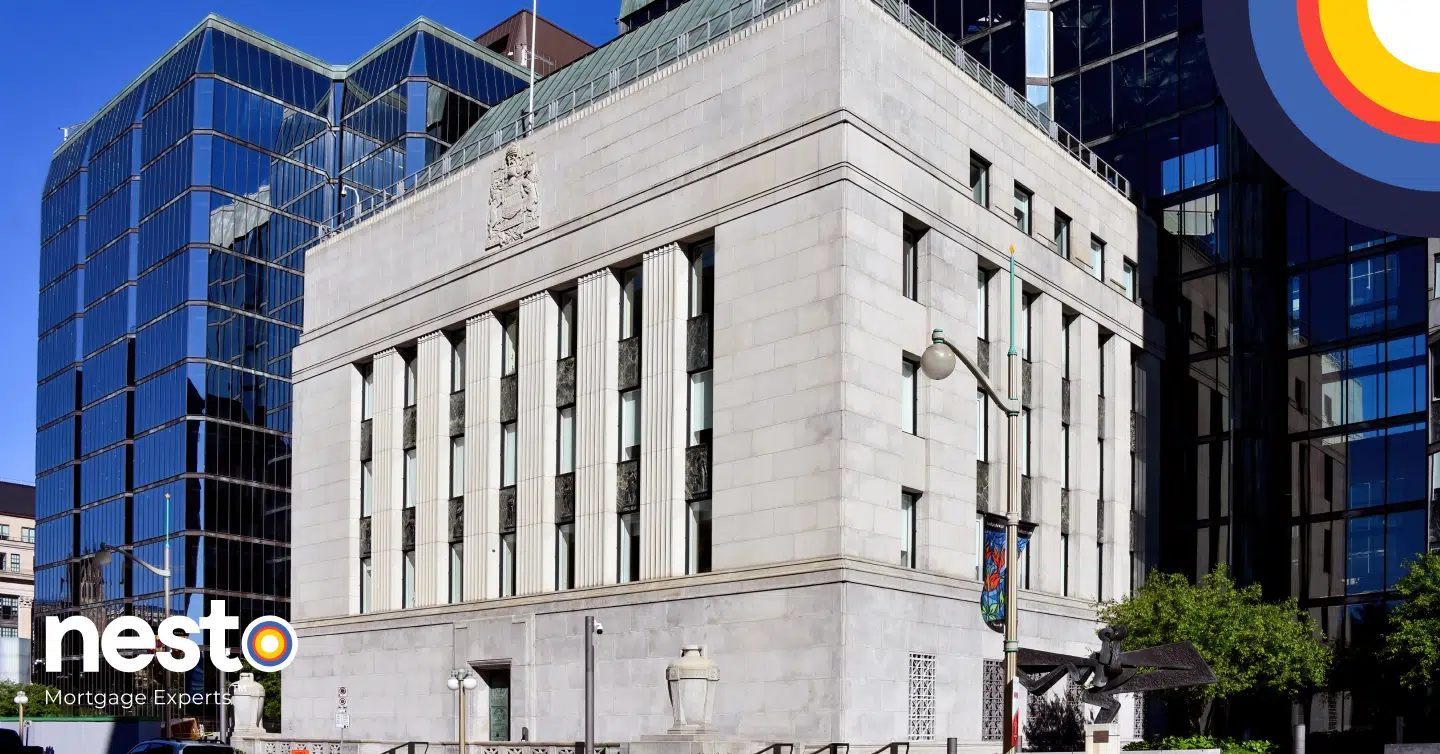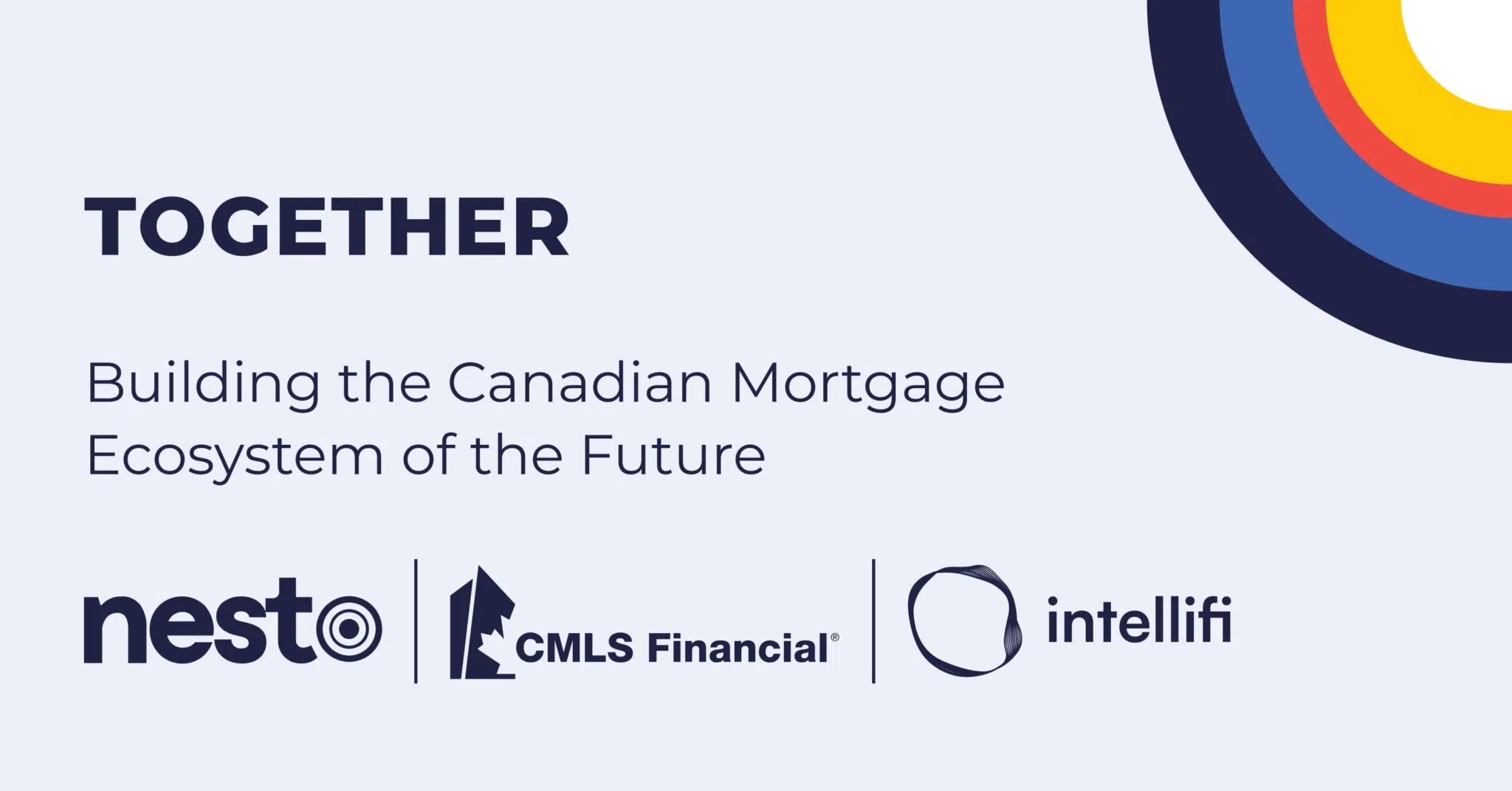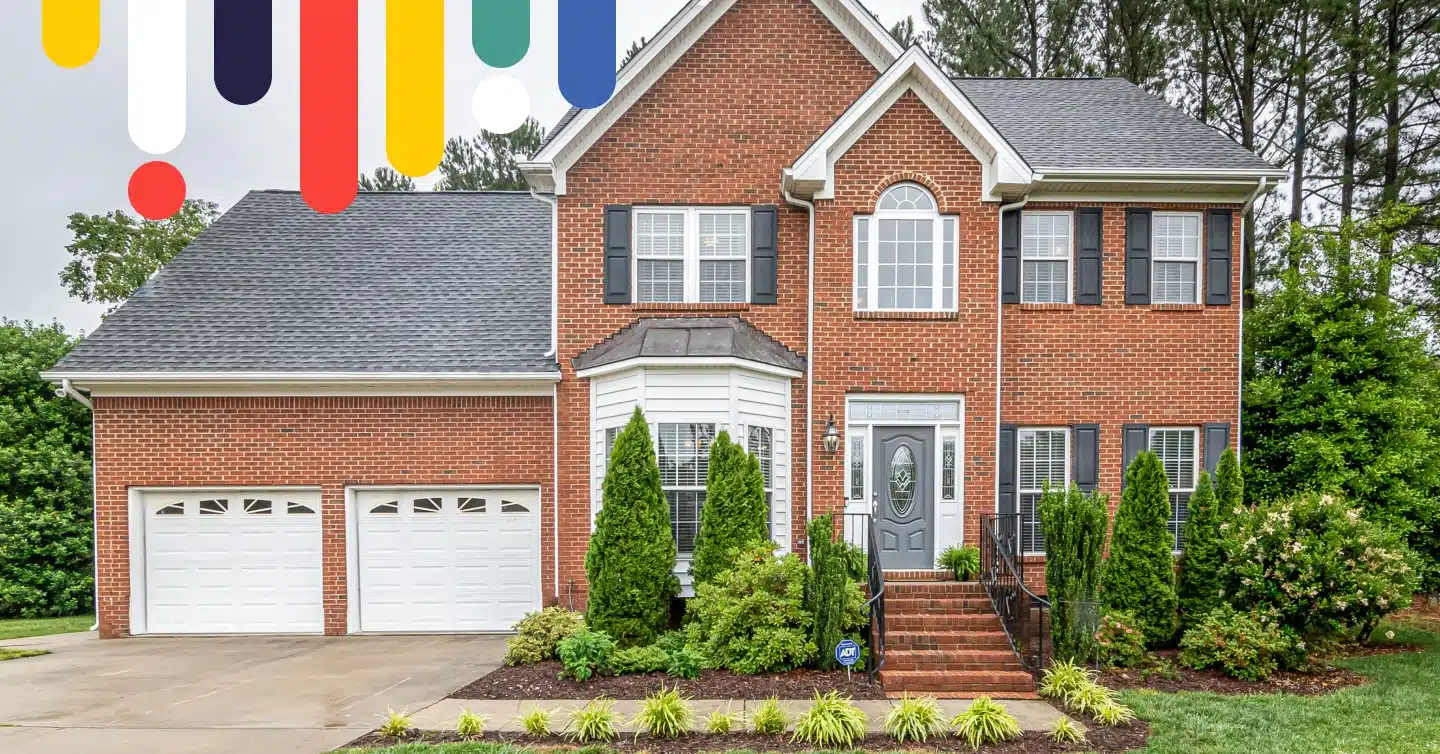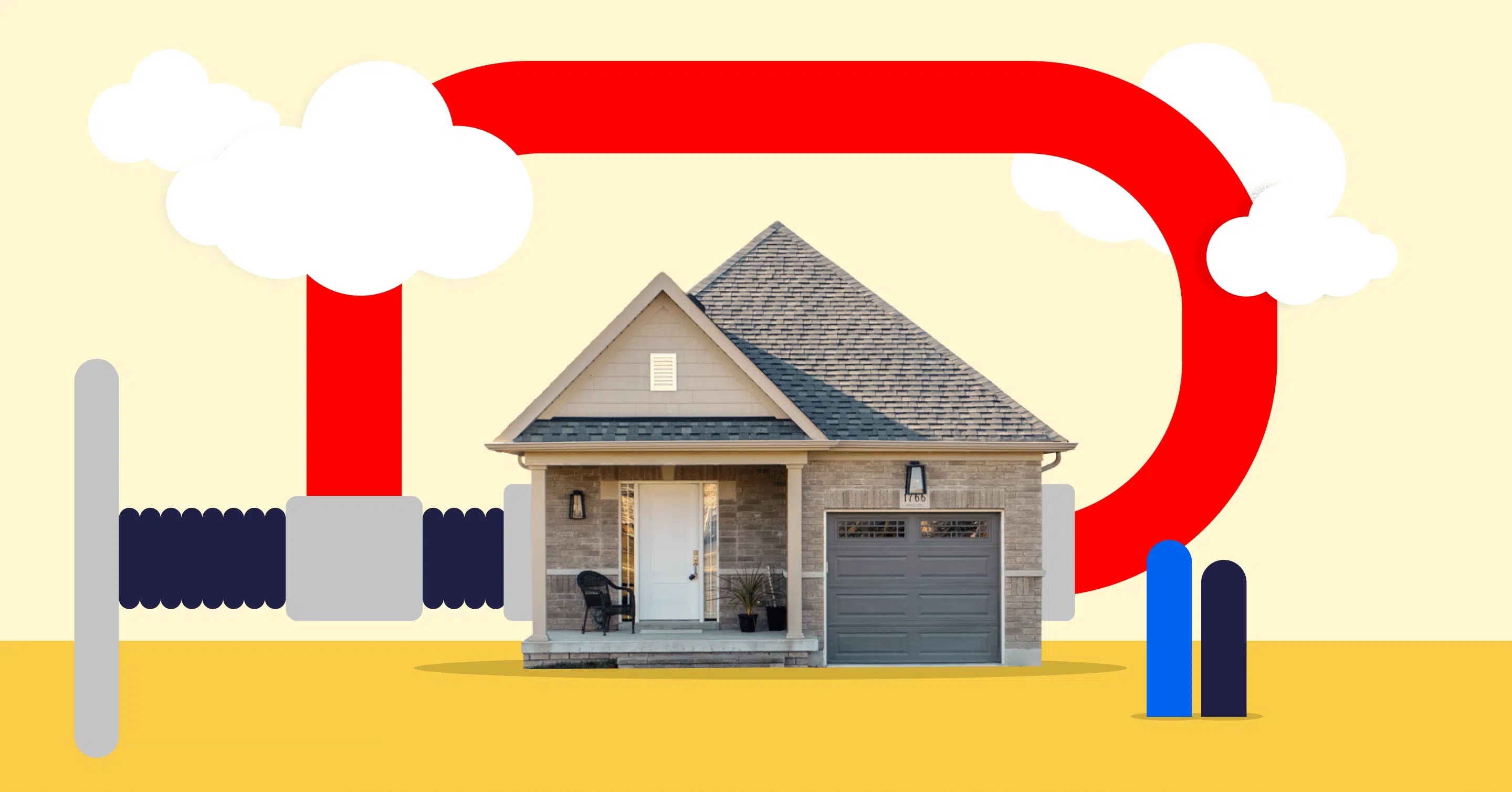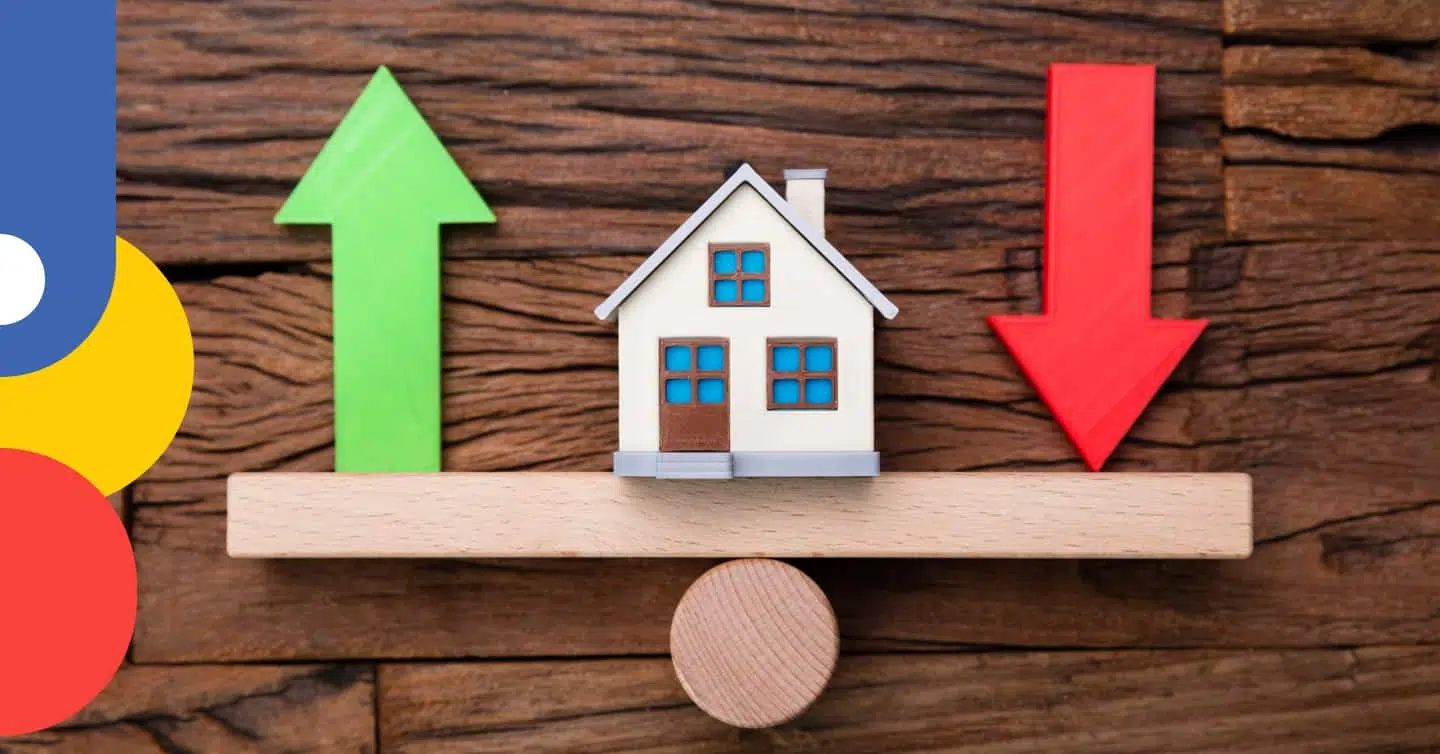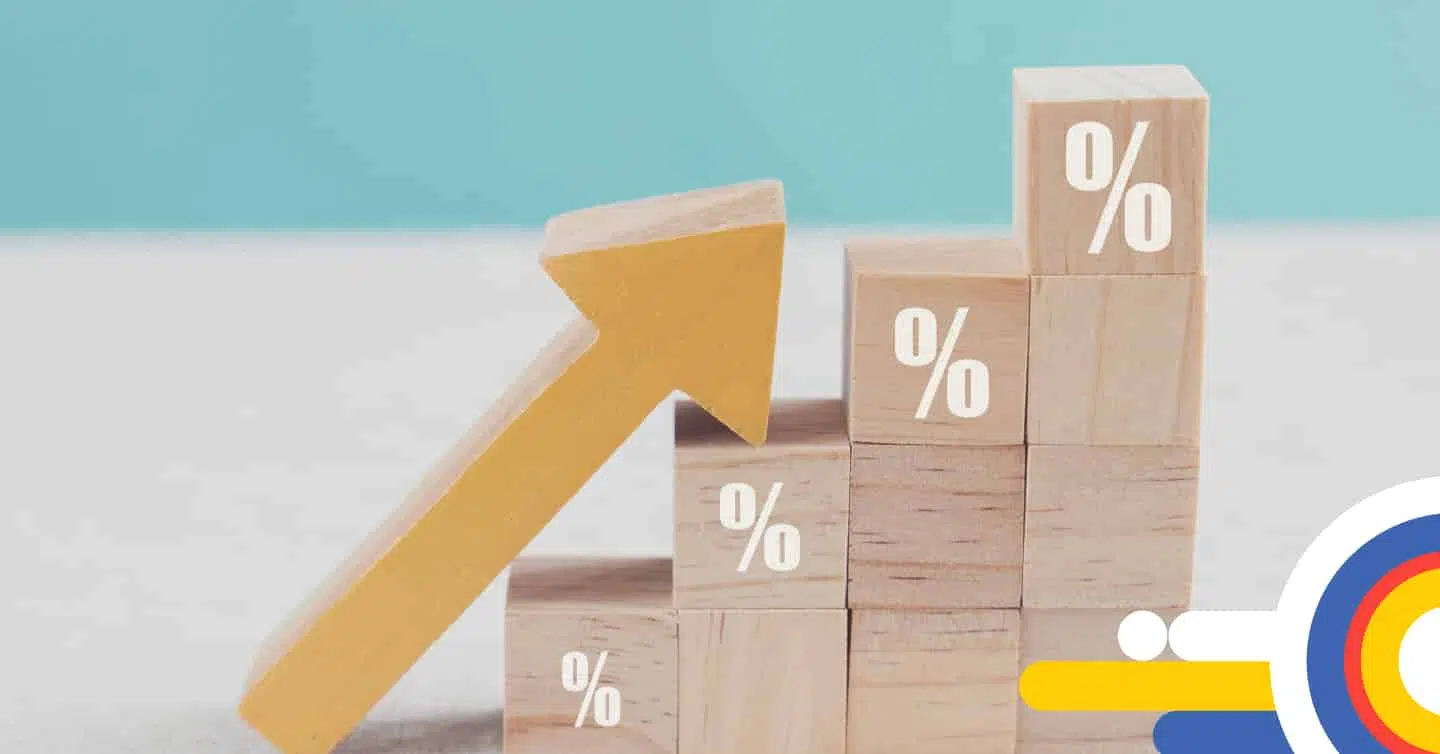Can I Get a 30-Year Mortgage in Canada?
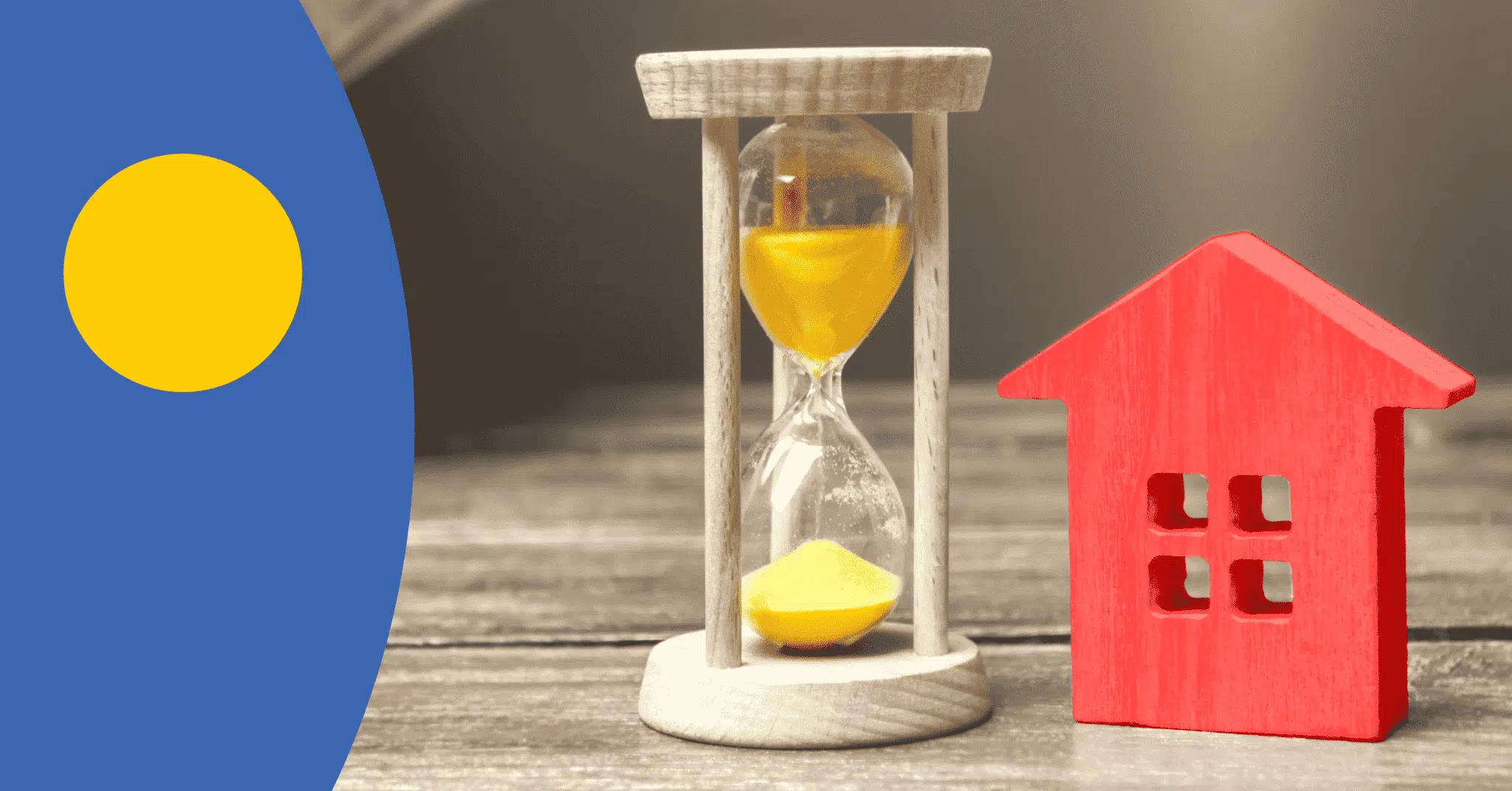
Table of contents
Notice: Effective November 21, 2024, mortgage transfers between lenders will be exempt from requalification. Transactionally insured (those who originally purchased with less than 20% downpayment) and uninsured mortgages (without increasing mortgage balance or amortization) will no longer be required to stress test when changing lenders at maturity. Going forward, only new purchase and refinance mortgage applications must be qualified through the stress test.
When you hear about a 25-year or 30-year mortgage in Canada, this is in reference to the amortization period. The amortization period is the length of time required to pay off the mortgage balance in full through regular payments.
While the most common mortgage amortizations in Canada are 25-year mortgages, many are interested in longer periods, especially in our current high interest rate environment. In this article, we break down what a 30-year mortgage is, how to get one, and why it’s inaccessible to many homebuyers.
Key Takeaways
- 30-year mortgages refer to the amortization or length of time it takes to pay off the mortgage balance in full.
- 30-year amortizations can help increase your purchasing power.
- 30-year mortgages may lower monthly payments. However, they come at the cost of higher interest over the life of the loan.
Can I Get a 30-Year Mortgage in Canada?
While you can get a 30-year mortgage in Canada, most mortgages feature a 25-year amortization period. This is primarily because CMHC mainly offers mortgage default insurance coverage for mortgages with a maximum amortization period of 25 years.
However, recently announced changes to regulations for insured mortgages, which will take effect on December 15th, 2024, will allow first-time buyers and those purchasing a newly built home to qualify for 30-year amortized default-insured mortgages. Essentially, it’s not that you can’t get a 30-year mortgage; it’s just much harder to do so without a large downpayment, purchasing a new build, or qualifying as a first-time buyer.
What Is the Longest Mortgage Amortization You Can Get in Canada?
Currently, a typical mortgage has a 25-year amortization period, but there used to be mortgages offering an amortization period of up to 40 years for insured mortgages. However, the federal Government of Canada scrapped this in 2008 when mortgage regulations were tightened, and the amortization was reduced to 35 years. In 2011, the amortization period was again reduced to 30 years; in 2012, it was reduced one final time to 25 years.
The maximum amortization allowed on insured mortgages today is 25 years, so this option is usually the most popular. Starting December 15th, 2024, all first-time buyers and those purchasing a newly built home can choose a 30-year amortization on insured mortgages.
There is no set maximum mortgage amortization period for uninsured mortgages. Sub-prime lenders offer mortgages with more than a 30-year amortization period. However, those who opt for uninsured mortgages can select a 30-year amortization from Prime Lenders if they pass up on the 25-year option.
Pros & Cons of a 30-Year Uninsured Mortgage in Canada
| Pros | Cons |
|---|---|
| More purchasing power | Higher interest rates |
| Smaller mortgage payments | Slow equity growth |
| Added flexibility | Higher interest-carrying costs |
| No mortgage default insurance premiums | Requires a 20% or more downpayment |
Pros of 30-Year Uninsured Mortgages
If you’re considering a 30-year uninsured mortgage, it’s important to weigh the pros and cons. Here’s why some homebuyers prefer to opt for a 30-year uninsured amortization.
More Purchasing Power
With a 30-year mortgage, your borrowing power increases, allowing you to shop for more expensive homes. One key factor lenders assess when looking for a mortgage is your debt service ratio. Spreading your mortgage payments out over 30 years compared to 25 lowers your monthly payments, making qualifying easier and increasing your purchasing power.
Smaller Mortgage Payments
Since your mortgage payments are spread over 5 more years, this reduces your monthly payments, leaving you with extra funds left over each month. These extra funds can be saved for emergencies or invested, giving you better peace of mind.
Added Flexibility
Given that CMHC does not insure 30-year mortgages for everyone, this grants certain freedoms. One is the freedom to purchase homes over $1.5 million, pending the lender’s lending limits where your property is located. Another perk of 30-year amortizations is the possibility of porting your mortgages to a new home over $1.5 million, although you’ll only be able to port your remaining balance and amortization.
For instance, assume that you own a condo presently worth $700,000. You could move or transfer this mortgage to a new home worth $1,700,000 that you want to buy, which wouldn’t be possible with an insured mortgage. With an insured mortgage, you would likely need to break your current mortgage, pay a prepayment penalty and potentially lose a lower interest rate.
Easily Increase Payments
Since choosing a 30-year mortgage may result in a lower mortgage payment, you can utilize any prepayment privileges that allow you to make extra payments and pay off your mortgage within a shorter time frame without any penalties.
In other words, you could pay off the mortgage in less than 30 years, speeding up your repayment schedule and reducing your total interest-carrying costs. This allows you to put any windfall gains or increases in income to good use. You can shorten the amortization anytime through additional payments or lump sum amounts within your annual prepayment limits.
Once you’ve built up at least 35% equity in your home, you could take advantage of lower insurable rates with a renewal into a 25-year or less amortization. Though higher than insured rates, insurable rates are comparable and typically much lower than uninsured ones. Insurable rates allow lenders to purchase low-ratio bulk portfolio insurance from CMHC to protect themselves from mortgage default risk. This provides much lower rates for mortgage renewal.
Cons of 30-Year Uninsured Mortgages
If you’re considering a 30-year uninsured mortgage, it’s important to ensure the cons don’t outweigh the pros. Here’s why some homebuyers may not want to opt for a 30-year uninsured amortization.
Higher Interest Rates
30-year amortizations typically have higher interest rates, so not only will you be paying a higher rate, but you’ll also be doing so over a longer duration, compounding the total interest you will pay over the life of the mortgage.
Default-insured mortgages have the lowest interest rates because the added mortgage default insurance protects the lender in case of default. Lenders offer the lowest rates due to the lower risk, encouraging borrowers to opt for this option. Uninsured mortgages are riskier for the lender, so they will price this risk into the mortgage rate offered to you to offset it as a part of their funding costs.
Slow Equity Growth
When choosing a 30-year amortization, it’s important to understand that it will take longer to pay off your mortgage while you will pay more interest over time. The price of the home may not increase as fast as your remaining mortgage balance reduces during that same time. Although you’re building equity by paying down your mortgage, it may not align with increasing home prices. At any given time, home prices typically tend to increase and decrease in the opposite direction of mortgage rate trends.
Higher Interest-Carrying Costs
A 30-year amortization on your mortgage allows for lower monthly or bi-weekly payments since payments are spread out over a longer period. However, this means you continue paying interest for those extra 5 years. These additional years mean you will ultimately pay more in interest-carrying costs over the life of the mortgage. Even more important to note is that you would still incur these extra costs if your interest rate were the same as a 25-year mortgage.
Requires a 20% or More Downpayment
Mortgages with 30-year amortizations typically require a 20% or more downpayment, which takes longer to save than a minimum 5% downpayment requirement on a 25-year mortgage. Saving 20% of the purchase price versus only 5% can significantly delay homeownership goals and possibly affect the borrowers’ qualifying amounts if regulations (such as stress tests) or home prices (increasing) become more restrictive.
Mortgage payment plans aren’t meant to be one-size-fits-all.
Chat with a nesto mortgage expert & get a mortgage payment fit to you.
Pros & Cons of a 30-Year Insured Mortgage in Canada
| Pros | Cons |
|---|---|
| More purchasing power | Slow equity growth |
| Smaller mortgage payments | Higher interest-carrying costs |
| Smaller downpayment requirement | Requires mortgage default insurance premiums |
| Must be a first-time buyer or purchasing a new build |
Pros of 30-Year Insured Mortgages
If you are a first-time buyer or purchasing a new build and considering a 30-year insured mortgage, weigh the pros and cons to understand how opting for a longer amortization can impact your finances. Here’s why you may prefer to opt for a 30-year insured amortization.
More Purchasing Power
As with 30-year uninsured mortgages, a 30-year insured mortgage will give you more borrowing power, allowing you to shop for more expensive homes. Lenders assess your debt service ratios when qualifying you for a mortgage, and extending payments over an extra 5 years makes it easier to qualify for more home.
Smaller Mortgage Payments
Since your mortgage payments are spread out over an additional 5 years, this reduces the amount you will pay for each mortgage payment. The extra funds you save from having a lower mortgage payment can be saved for emergencies or invested, giving you better peace of mind.
Smaller Downpayment Requirement
Insured mortgages require a minimum 5% downpayment on the first $500,000 mortgage balance, allowing you to purchase a home with a lower downpayment than uninsured mortgages.
For example, if you are a first-time buyer looking to buy a $600,000 home and know you want a 30-year amortization, you would require 20% down or $120,000 if you went for an uninsured mortgage. Choosing a 30-year insured amortization lowers the downpayment required to $35,000 (5% of the first $500,000 and 10% of the remaining $100,000).
Cons of 30-Year Insured Mortgages
If you’re a first-time buyer or purchasing a newly built home and are considering a 30-year insured mortgage, it’s important to ensure the cons don’t outweigh the pros. Here are some reasons you may not want to opt for a 30-year insured amortization.
Slow Equity Growth
30-year amortizations will take longer to pay off while adding to the amount of interest you will pay over time. If the value of your home doesn’t increase as quickly as your remaining mortgage balance reduces, it will take longer to build equity in your home.
Higher Interest-Carrying Costs
A 30-year amortization will lower your mortgage payments since the payments are spread out over an additional 5 years compared to a 25-year amortization. However, this also means you will pay interest over the extra 5 years it takes you to pay off your mortgage, increasing your interest-carrying costs.
Requires Mortgage Default Insurance Premiums
All insured mortgages require you to pay a default insurance premium. Mortgage default insurance protects the lender against default when borrowers put less than 20% down.
Premiums are based on the loan-to-value (LTV) ratio and can be paid as a lump sum or added to your mortgage and included as part of your mortgage payments. Adding the premium to your mortgage payments will increase your mortgage balance, increasing the total interest you will pay.
Must Be a First-Time Buyer or Purchasing a New Build
30-year insured amortizations are only available to first-time homebuyers (FTHB) and those purchasing a new build. This limits the number of eligible borrowers from benefiting from the qualifying criteria, interest rates, and downpayment requirements for a 30-year insured amortization.
Canadian 30-Year Mortgages: High-Ratio vs Low-Ratio Mortgages
A high-ratio mortgage refers to mortgages where the downpayment made is less than 20% of the purchase price. Meanwhile, low-ratio mortgages have a downpayment of 20% or more.
- High-ratio mortgages require mortgage default insurance, otherwise known as CMHC insurance. In addition to the mandatory insurance costs, this loan type typically has a maximum amortization period of 25 years. New changes will allow first-time buyers and those purchasing a new build to opt for 30-year insured mortgages.
- Low-ratio mortgages may not directly require the borrower to pay for default insurance, so you will save money by not adding this additional expense. With prime lenders, low-ratio mortgages can also have an amortization period of up to 30 years for all eligible borrowers. This is regardless of whether they are first-time buyers or purchasing a new build, as long as they have the required 20% downpayment and meet all other eligibility criteria.
Am I Eligible for a 30-Year Mortgage in Canada?
The mandatory minimum is a 20% downpayment for 30-year amortizations or 5% if you’re a first-time buyer or purchasing a new build and opting for a 30-year insured amortization. Eligibility is determined by the same key factors for any other mortgage, including a potential borrower’s credit score, income, and debt service ratios. Lending institutions thoroughly assess these factors to evaluate the risk associated with granting a mortgage loan to the applicant.
Your credit score plays a pivotal role in determining your eligibility for a mortgage. It serves as an indicator of the borrower’s debt repayment habits and financial discipline.
Income is another significant factor affecting eligibility. Lenders need assurance that the borrower has a stable income source that can adequately cover the mortgage payments, property taxes and heating costs over the life of the loan.
Your debt service ratio is also taken into account. This ratio measures a person’s total debt obligations in relation to their income. A lower ratio indicates that the person has a greater percentage of their income available for mortgage payments. The lender will use up to 35% of your gross income to service costs on an uninsured mortgage and up to 39% if your mortgage is insured. However, if your credit score is below 680, the lender may limit including only 32% of your gross income to service your mortgage.
What Is the Best Mortgage Amortization For You?
A longer amortization may not always be the best solution. While it may decrease your monthly payments, freeing up cash flow, it may also significantly increase the total interest you will pay over the life of the mortgage. It’s important to assess your financial situation, including what you have saved for a downpayment. You should also review your short and long-term goals to see if an extended amortization helps you meet those goals.
Comparing 30-Year Mortgage vs. 20-Year Mortgage in Canada
Here’s a comparison between a 20-year and 30-year mortgage on a 5-year fixed rate for an $800,000 property.
| 20-year insured mortgage (CMHC insured) | 20-year uninsured mortgage (20% downpayment) | 30-year uninsured mortgage (20% downpayment) | |
|---|---|---|---|
| Minimum Downpayment | $55,000 | $160,000 | $160,000 |
| CMHC Premium | $29,800 | NA | NA |
| Total Mortgage Amount | $774,800 | $640,000 | $640,000 |
| Interest Rate | 5.19% | 5.39% | 5.99% |
| Monthly Payment | $5,171 | $4,341 | $3,803 |
| Total Interest | $466,286 | $401,940 | $729,033 |
| Total Mortgage Amount | $1,241,086 | $1,041,940 | $1,369,033 |
Comparing 30-Year Mortgage vs. 25-Year Mortgage in Canada
Here’s a comparison between insured and uninsured 25-year and 30-year mortgages on a 5-year fixed rate for an $800,000 property. The comparisons below show the impact on the total interest you will pay under the new changes to insured mortgages if you choose the 30-year amortization instead of 25 years. This only applies to first-time buyers or those purchasing a newly built home.
| 25-year insured mortgage (CMHC insured) | 25-year uninsured mortgage (20% downpayment) | 30-year insured mortgage (CMHC insured) | 30-year uninsured mortgage (20% downpayment) | |
|---|---|---|---|---|
| Minimum Downpayment | $55,000 | $160,000 | $55,000 | $160,000 |
| CMHC Premium | $29,800 | NA | $31,290 | NA |
| Total Mortgage Amount | $774,800 | $640,000 | $776,290 | $640,000 |
| Interest Rate | 5.19% | 5.39% | 5.19% | 5.99% |
| Monthly Payment | $4,590 | $3,866 | $4,231 | $3,803 |
| Total Interest | $602,333 | $519,687 | $747,035 | $729,033 |
| Total Mortgage Amount | $1,377,133 | $1,159,687 | $1,523,325 | $1,369,033 |
Is There a Difference in Interest Rates for 30-Year Mortgages in Canada?
Generally, mortgages with longer amortization periods will have a higher interest rate than those with shorter ones. Depending on the lender, the discrepancy between the 25-year and 30-year mortgage rates can be quite significant.
Insured mortgages are covered by one of Canada’s 3 default insurers: CMHC, Canada Guaranty, or Sagen. These insurers cover the lender’s risk should you default on mortgage payments, allowing lenders to price mortgages with this insurance lower than uninsured mortgages.
For example, nesto’s best 5-year fixed insured mortgage rate is currently
You’ll notice that the typical 5-year average insured rate at big banks is
Should You Get A 30-Year Mortgage in Canada?
A 30-year mortgage can be a great option to make payments more manageable in today’s high interest rate environment. If you meet the requirements to choose 30 years over 25, there are ways you can reduce the additional interest you will pay over the life of the loan.
When you have extra funds, you can shorten your amortization and pay off your mortgage faster by making additional payments or lump sum prepayments. When you come up for renewal, you can also re-evaluate your amortization and opt for an insurable rate.
If your income has significantly increased, you could also change your payment or payment frequency. If you can manage higher mortgage payments, this will reduce the interest you pay over the loan’s lifetime.
Frequently Asked Questions
Do 30-year mortgages exist in Canada?
In Canada, a 30-year mortgage refers to the amortization period, or the length of time it takes to pay off the mortgage. Most lenders offer 30-year amortizations if you have the required downpayment and meet all eligibility criteria.
How can I get a 30-year mortgage in Canada?
To get a 30-year mortgage, you must have at least 20% or more as a downpayment and qualify under the uninsured debt service ratio criteria. First-time buyers and those purchasing a new build who qualify under insured debt service ratio criteria may be eligible for an insured 30-year mortgage with as little as 5% as a downpayment.
What’s the longest amortization period for a mortgage in Canada?
There is technically no maximum amortization period in Canada if you choose an uninsured mortgage. However, with prime lenders, you can only go up to a maximum of 30 years. Sub-prime lenders will allow amortizations of 40 years or more.
Find a better rate, and we’ll match it, beat it, or give you $500*.
*Conditions Apply
With nesto, it’s stress-free
Final Thoughts
Deciding between an insured 25-year amortization or an uninsured 30-year amortization should depend on your financial circumstances and homeownership goals. If you have the financial standing to choose both but aren’t sure what’s best for your needs, contact nesto’s mortgage experts for a suitable mortgage strategy to fit your unique needs.
Ready to get started?
In just a few clicks, you can see our current rates. Then apply for your mortgage online in minutes!


